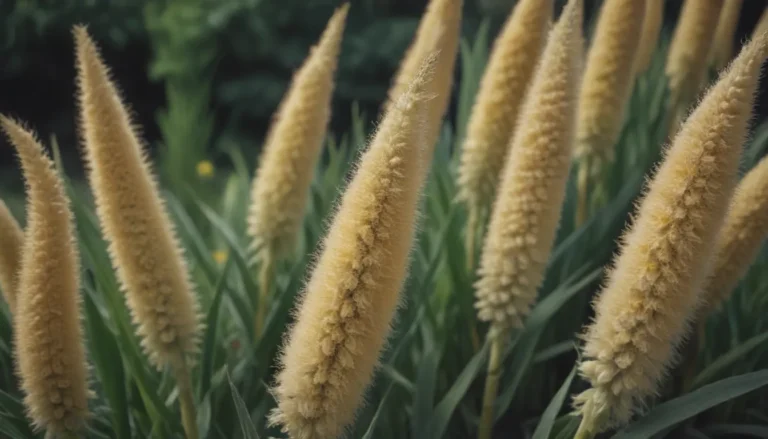The Ultimate Guide to Growing and Caring for Privet Shrubs

Privet plants, also known as Ligustrum spp., are versatile evergreen shrubs that are commonly used as hedges due to their dense, oval or lance-shaped, glossy green leaves. With roughly 50 different species within the Ligustrum genus, privet plants can add a classic look to any property border. Their name even suggests privacy, making them an excellent choice for those looking to create a natural privacy fence in their yard.
Benefits of Privet Shrubs
- Classic look for property borders
- Creates a natural privacy fence
- Quick growth rate
- Can be planted in spring or fall
- Tolerant of a wide range of growing conditions
Privet Care Tips
Privet shrubs are relatively easy to care for, but there are some essential tips to keep in mind to ensure their health and vitality. Here are some key points to consider when growing and caring for privet plants:
-
Planting: When planting a new hedge, position the privet plants about a foot apart in a trench that is 2 feet wide and 2 feet deep. Make sure the planting site has good drainage to prevent waterlogging.
-
Watering: Regular watering is essential for newly planted privet shrubs and established plants during dry spells. Deep weekly watering is recommended for young shrubs, while mature shrubs have good drought tolerance but may need supplemental watering during extended dry periods.
-
Fertilizing: Privet plants benefit from regular fertilization throughout the growing season (spring to fall). Use a 15-5-10 fertilizer or a fertilizer specifically formulated for broadleaf shrubs, following label instructions for application.
-
Light: Privet shrubs typically thrive in full sun, receiving at least six hours of direct sunlight daily. They can also tolerate partial shade conditions.
Types of Privet Shrubs
There are numerous species and varieties of privet shrubs to choose from, each with its unique characteristics. Here are some popular varieties of privet plants:
- Korean privet/California privet (Ligustrum ovalifolium)
- Golden privet (Ligustrum ovalifolium ‘Aureum’)
- Common privet (Ligustrum vulgare)
- Border privet (Ligustrum obtusifolium)
- Amur privet (Ligustrum amurense)
Pruning and Shaping Privet Shrubs
Privet shrubs are tolerant of heavy pruning and shaping, making them an excellent choice for creating formal hedges. To encourage denser growth and maintain the desired shape of your privet hedge, follow these pruning tips:
- Timing: Prune immediately after flowering ceases to avoid removing new buds for the next year’s flowers.
- Frequency: Lightly prune throughout the summer to promote bushier growth and more branching.
- Maintenance: Keep a privet hedge manageable by pruning two to four times per growing season, depending on the growth rate of the specific variety.
Propagating Privet Shrubs
While privet plants are known for their aggressive spreading, you can propagate them from cuttings to fill in gaps in an existing hedge. Follow these steps to propagate privet shrubs from cuttings:
-
Selecting Cuttings: Choose healthy, non-flowering stems for cutting propagation.
-
Preparing Cuttings: Trim the stems to include at least two nodes and remove any leaves from the lower half of the cutting.
-
Rooting Cuttings: Dip the cut end of the stem in rooting hormone and plant it in a well-draining potting mix. Keep the soil consistently moist until roots develop.
-
Transplanting: Once roots have formed, transplant the cuttings into the desired location in the garden.
Common Pests and Diseases
While privet shrubs can be susceptible to pests and diseases, proper care and maintenance can help prevent and manage these issues. Some common pests and diseases that may affect privet plants include:
- Leaf spots
- Powdery mildew
- Aphids
- Leaf miners
- Scale
- Mealybugs
- Mites
- Anthracnose
- Twig blight
Common Problems with Privet Shrubs
To ensure the health and vitality of your privet hedge, it’s essential to address common problems that may arise. Some issues that you may encounter when growing privet shrubs include:
- Overgrowth: Privet shrubs have a vigorous growth rate and may require frequent pruning to prevent overgrowth and maintain the desired shape.
- Bare Spots: Improper pruning or spacing can lead to bare spots in a privet hedge. Regular pruning and maintenance can help promote healthy growth and fill in any gaps.
- Invasiveness: Some species of privet, such as Chinese privet or Japanese privet, can become invasive and outcompete native plants. Consider using non-invasive alternatives to prevent ecological disruptions.
In conclusion, privet shrubs are versatile plants that can add beauty and privacy to any garden or landscape. By following proper care and maintenance practices, you can enjoy a thriving privet hedge that enhances the aesthetic appeal of your outdoor space. Whether you’re looking to create a formal hedge or add a touch of greenery to your garden, privet shrubs are an excellent choice for both novice and experienced gardeners alike.





